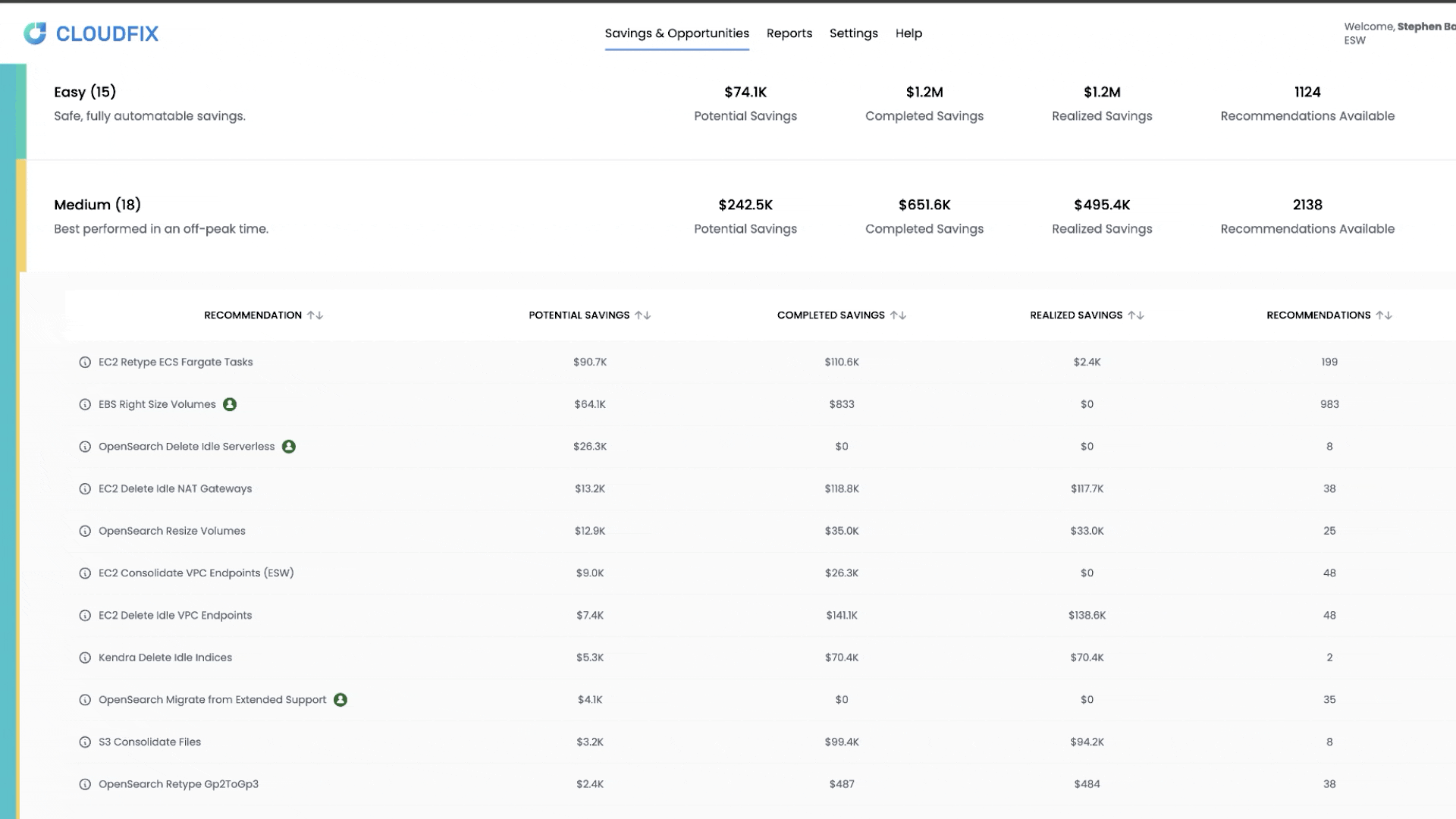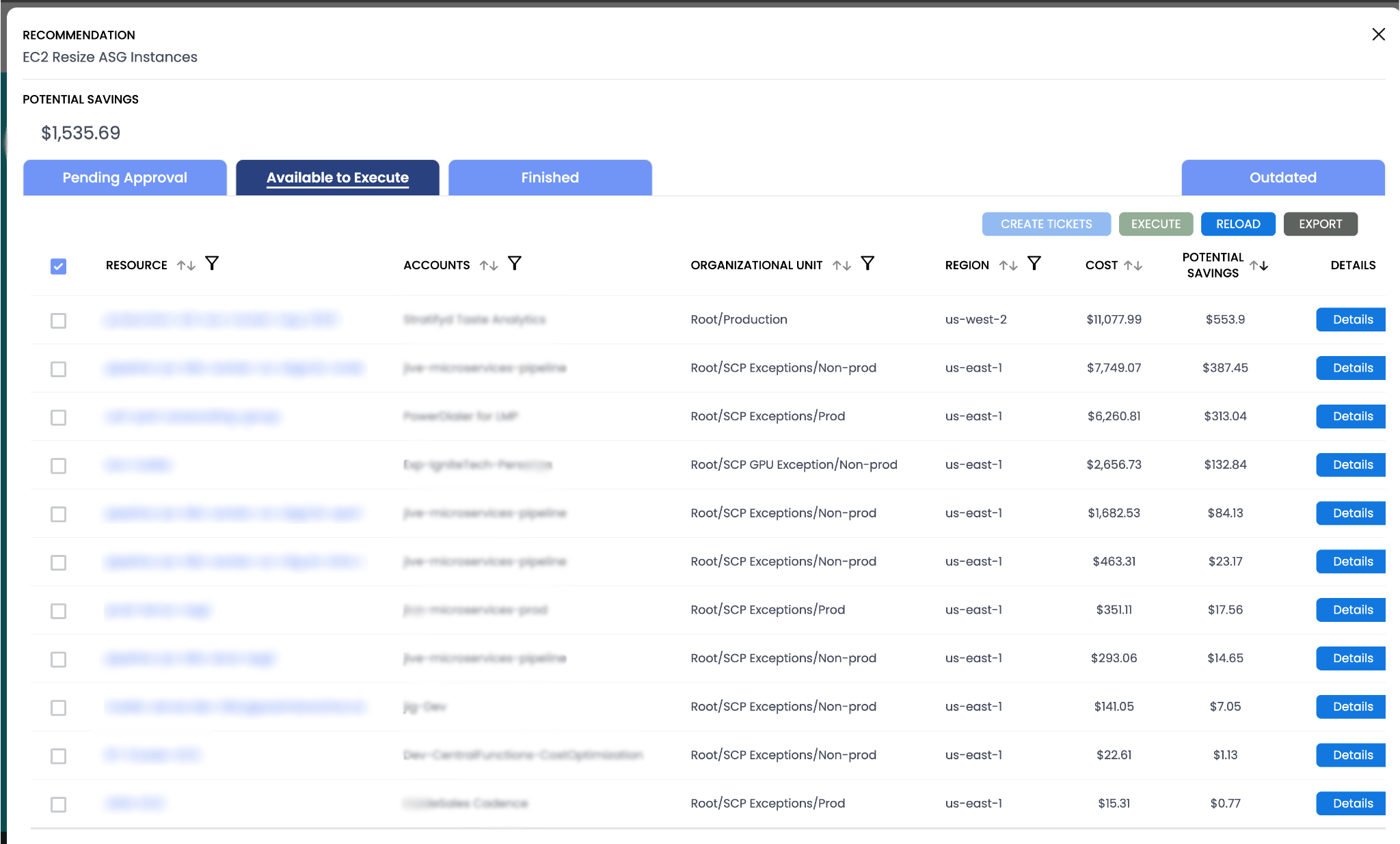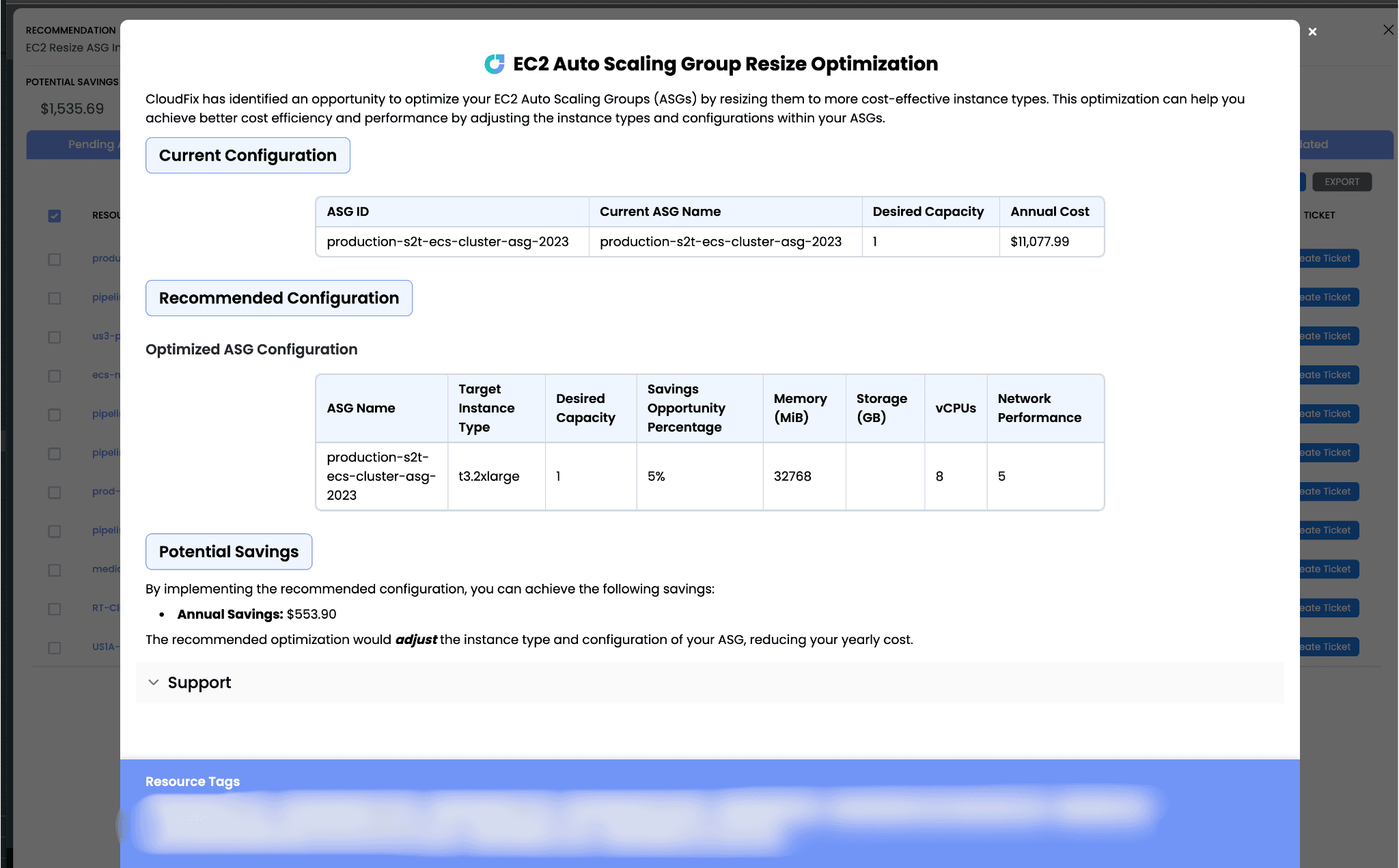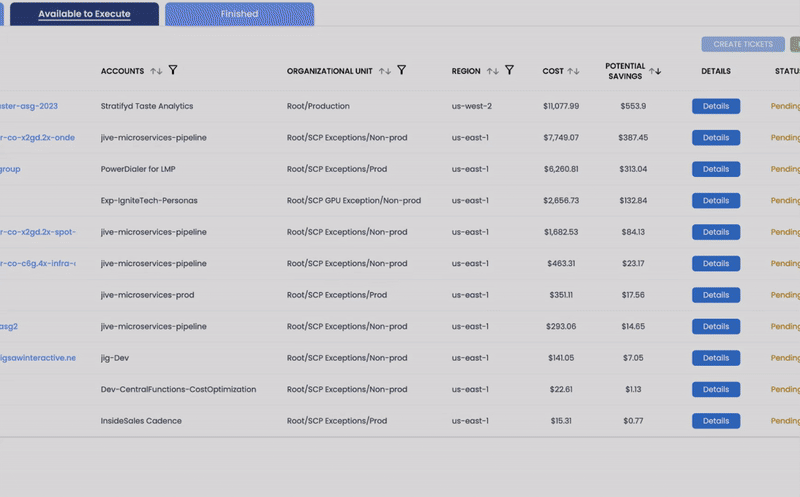CloudFix + Compute Optimizer to Save
Optimize AWS EC2 Auto Scaling Groups

Automating AWS Auto Scaling Group Optimization with CloudFix: A Deep Dive
If you’re running workloads on AWS, there’s a good chance you’re using Auto Scaling Groups (ASGs) to manage your EC2 instances. While ASGs are great for maintaining application availability, they can also be a source of unnecessary costs if not optimized properly. In this blog post, we’re going to look at how CloudFix’s ASG Finder/Fixer works to automatically identify and implement cost-saving opportunities for your Auto Scaling Groups.
What are Auto Scaling Groups?
If you’re already managing EC2 instances, you know the challenges of manually adjusting your instance count as demand changes. Auto Scaling Groups (ASGs) solve this by automating the process of launching and terminating EC2 instances. Instead of manually creating instances or writing custom scaling scripts, you define a template for your instances and set conditions for when to add or remove capacity.
For example, if you’re currently running a fixed number of t3.large instances for your application, an ASG could automatically launch additional instances when CPU utilization exceeds 70% and terminate them when utilization drops below 30%. This happens automatically, following rules you define, without requiring manual intervention.
Some practical uses of ASGs include:
- Replacing manual instance management with automated scaling rules based on CloudWatch metrics
- Maintaining high availability by automatically distributing instances across your chosen AZs
- Automatically replacing failed instances without waiting for someone to notice and intervene
- Reducing costs by automatically scaling down during off-peak hours
While ASGs simplify EC2 management, their configuration can significantly impact your AWS costs. This is where CloudFix comes in.
How the ASG Finder/Fixer Works
Like all CloudFix Finder/Fixers, the ASG optimizer follows a methodical approach to identify, validate, and implement AWS-recommended cost savings. Let’s break down each step of the process.
Step 1: Finding Optimization Opportunities
The process begins with a sophisticated Cost and Usage Report (CUR) query that looks for specific patterns in your AWS usage. Here’s what we’re looking for:
- EC2 instances associated with Auto Scaling Groups
- Usage patterns over the last 31 days (excluding the most recent day for data accuracy)
- Instances with significant cost impact
- Resources that aren’t part of managed services like EMR or EKS
We also apply some smart exclusions to avoid disrupting critical infrastructure:
- CloudFormation-managed resources
- Migration Hub workloads
- Resources tagged with
cloudfix_dont_fix_it
Step 2: Cost Analysis
The Finder performs two critical cost calculations:
-
Standard On-demand Cost (annualized_public_cost)
- Base EC2 instance pricing without any discounts
- Projected annual cost based on current usage
-
True Cost Analysis (annualized_amortized_cost)
- Accounts for Savings Plans
- Factors in Reserved Instance usage
- Includes applicable discounts and credits
- Considers tax implications
This dual analysis ensures we’re working with accurate numbers when calculating potential savings.
Step 3: Validation Process
Before recommending any changes, our ValidatorService performs multiple checks to ensure the optimization is both safe and beneficial:
# Pseudo-code representation of validation flow
def validate_asg():
if not asg_exists():
return False
if uses_launch_configuration():
return False # Skip legacy launch configurations
if has_reserved_instance_coverage():
return False # Already optimized through RIs
if instance_age > MAX_AGE_MONTHS:
return False # Skip older instances
if has_warm_pools() or has_overrides():
return False # Skip complex configurations
recommendations = get_compute_optimizer_recommendations()
return validate_recommendations(recommendations)
Step 4: Compute Optimizer Integration
CloudFix leverages AWS Compute Optimizer’s recommendations to ensure all suggested changes are backed by AWS’s machine learning-driven analysis. This integration:
- Analyzes instance metrics and usage patterns
- Identifies optimal instance types for your workload
- Calculates potential savings with high confidence
- Ensures performance requirements are maintained
Benefits of Automated ASG Optimization
-
Consistent Cost Savings
- Automatically implements AWS-recommended instance type changes
- Typically achieves 10-15% savings on applicable ASGs
- Zero risk of performance impact due to AWS validation
-
Zero Operational Overhead
- No manual analysis required
- Automated implementation of changes
- Built-in safety checks and validations
-
Continuous Optimization
- Regular re-evaluation of ASG configurations
- Adapts to new instance types and pricing
- Keeps up with AWS’s latest recommendations
Getting Started
To start optimizing your Auto Scaling Groups with CloudFix:
- Click on the EC2 Resize ASG Instances button in your CloudFix dashboard

- Review the automatically generated savings recommendations:


- Click on “Create Ticket”

This will use our JIRA integration. Alternatively, depending on how things are configured, you can click “Execute” if it is available to trigger the change process.
Remember, CloudFix only implements changes that are:
- Recommended by AWS
- Validated for safety
- Proven to generate savings
- Free from performance impact
Ready to start optimizing your AWS Auto Scaling Groups? Try CloudFix today and see how much you can save with zero effort and zero risk.


